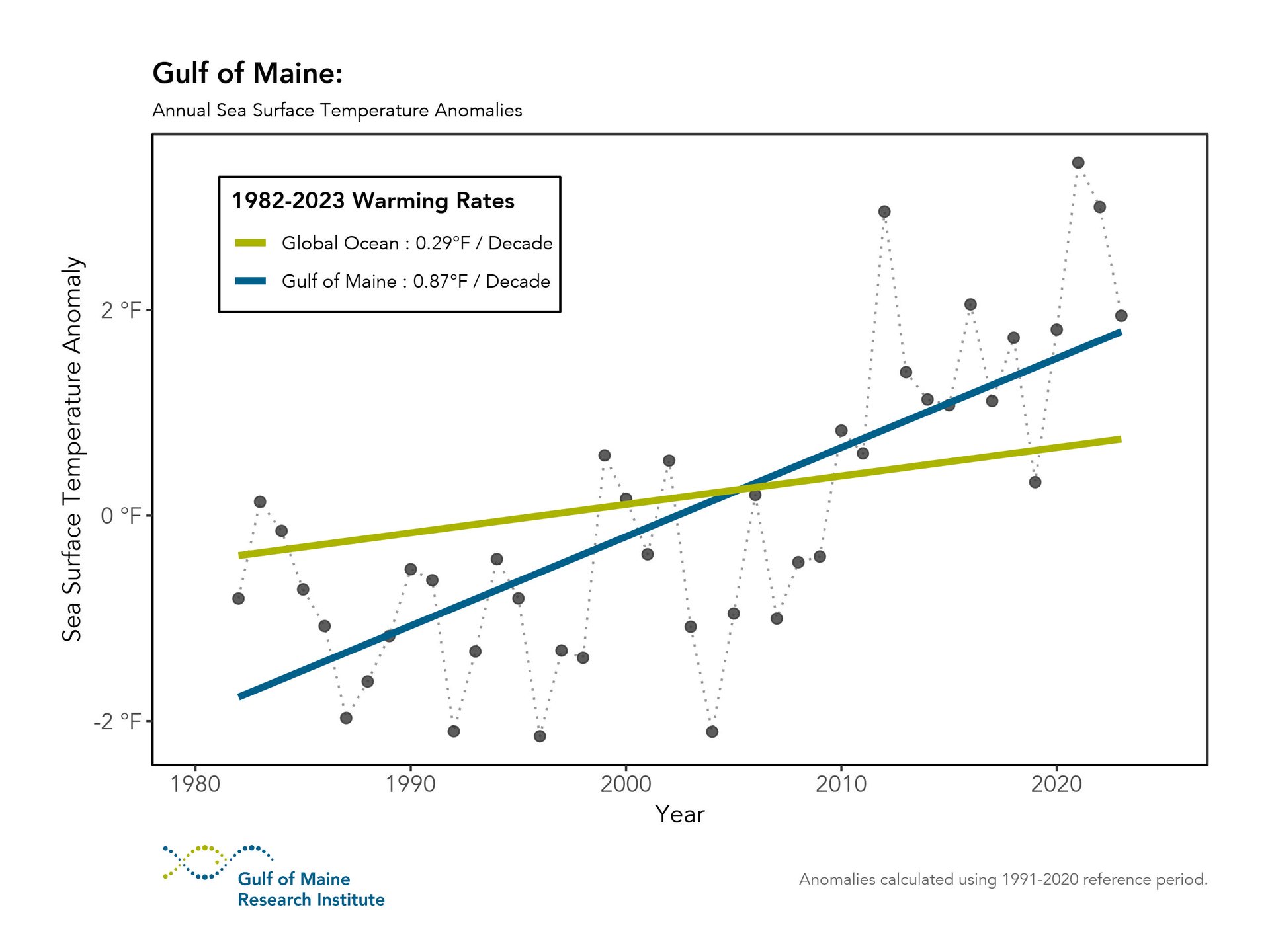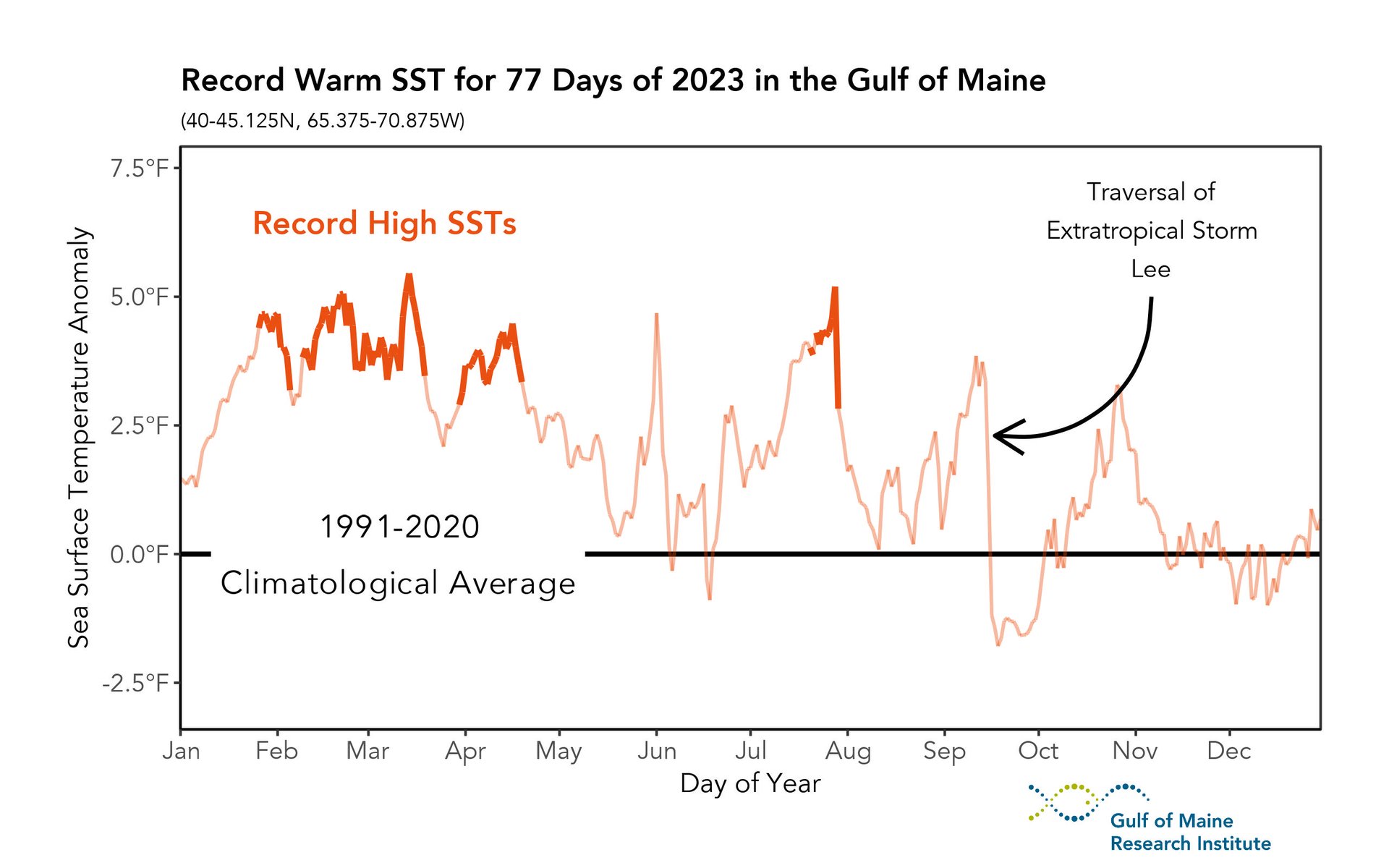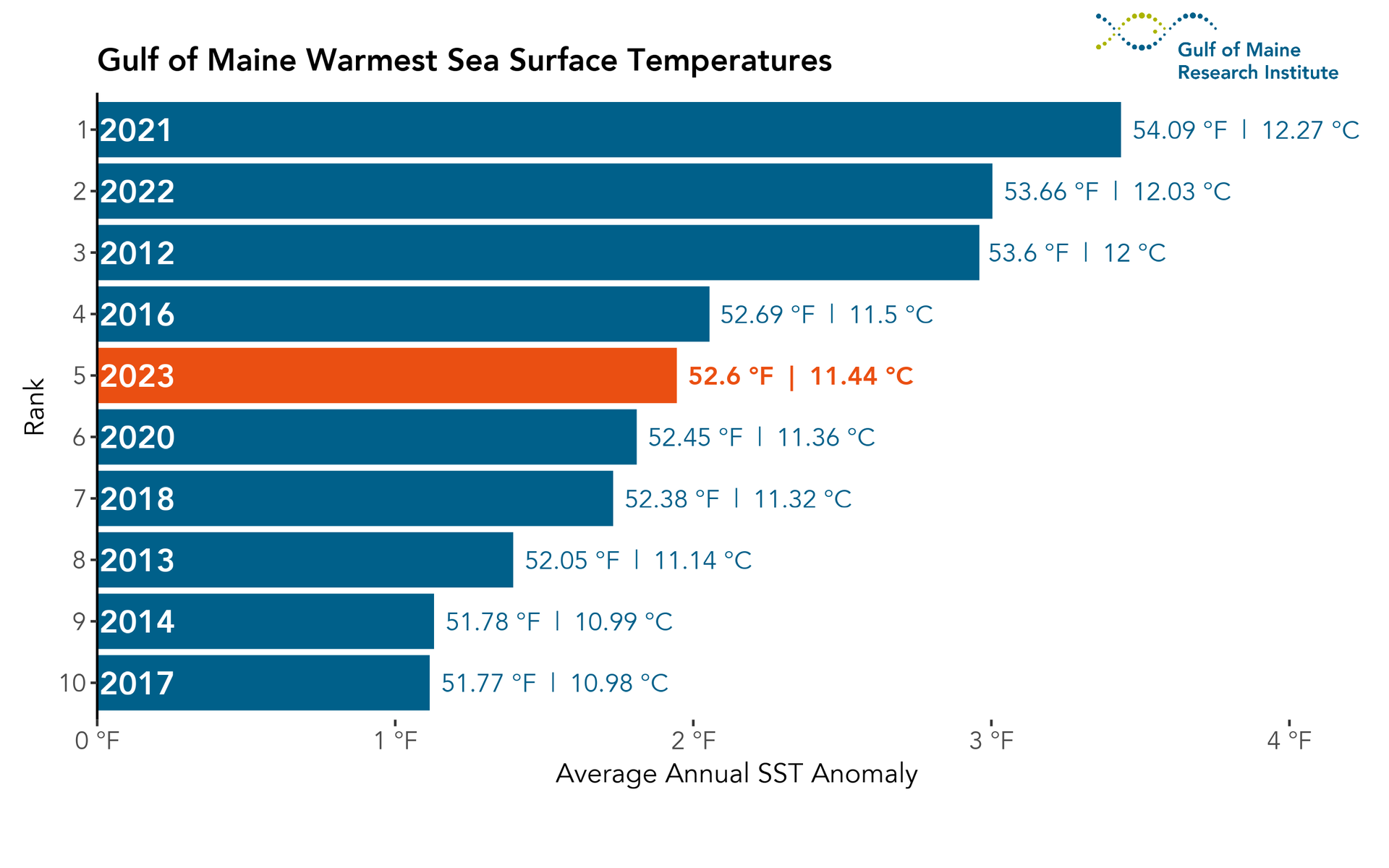2023 was a record-breaking year for sea surface temperatures in the Gulf of Maine. For the first four months of 2023, the average monthly sea surface temperature (SST) in the Gulf of Maine was among the top three and the warmest since 1982. 2021 remains the warmest year on record for the Gulf of Maine, with an average SST of 54.1 degrees Fahrenheit (F), but according to the Gulf of Maine Research Institute (GMRI), 2023 was record-breaking by several other measures.
Since the early 1980s, the Gulf of Maine has been experiencing a warming rate (0.9 degrees F) that is triple that of the world’s oceans (0.3 degrees F). This stark disparity is a cause for concern, especially considering the significant jump in SSTs in the region from 2009 to 2012. This remains an area of active research, but the sustained warm conditions suggest a shift in the influence of major ocean currents, such as the Gulf Stream vs. Labrador Current in the Gulf of Maine. The long-term increase in SST is expected due to human-caused climate change.

The warming trend is not limited to the Gulf of Maine. World land and sea surface temperatures for 2023 have been reported as the warmest yearly temperature on record, with temperatures in the North Atlantic alarmingly high. SSTs in the North Atlantic were, on average, 1.5 degrees F above the 1991 to 2000 baseline for the year. This is a global concern, as all the daily record highs of SST have occurred in 2020, 2023, and 2023.
Back in the Gulf of Maine, average spring SSTs were the second warmest on record; however, they were declining by the end of April. There was a brief spike in SSTs in July, leading to a short period of record-setting daily averages. The later months in 2023 brought temperatures closer to the long-term average conditions. Extratropical storm Lee played a role in keeping SST low as it crossed the region.

2023 Gulf of Maine temperatures secured its spot as the fifth warmest year on record regarding recorded SSTs. Eight of the past ten years have been among the warmest years on record. The lowest temperatures were observed in March, and the highest were observed in August. The first half of 2023 were some of the highest-ever recorded temperatures in the region. Record-breaking warmth was observed on over half the days in February, March, and April.

GMRI summarized the findings of the Gulf of Maine as a region experiencing profound changes. Since 2021, the region has experienced many anomalously hot SSTs and prolonged marine heatwave events. Cooler-than-average SSTs have become increasingly rare.
Go to the Gulf of Maine Research Institute to read more about the Gulf of Maine 2023 warming update.







